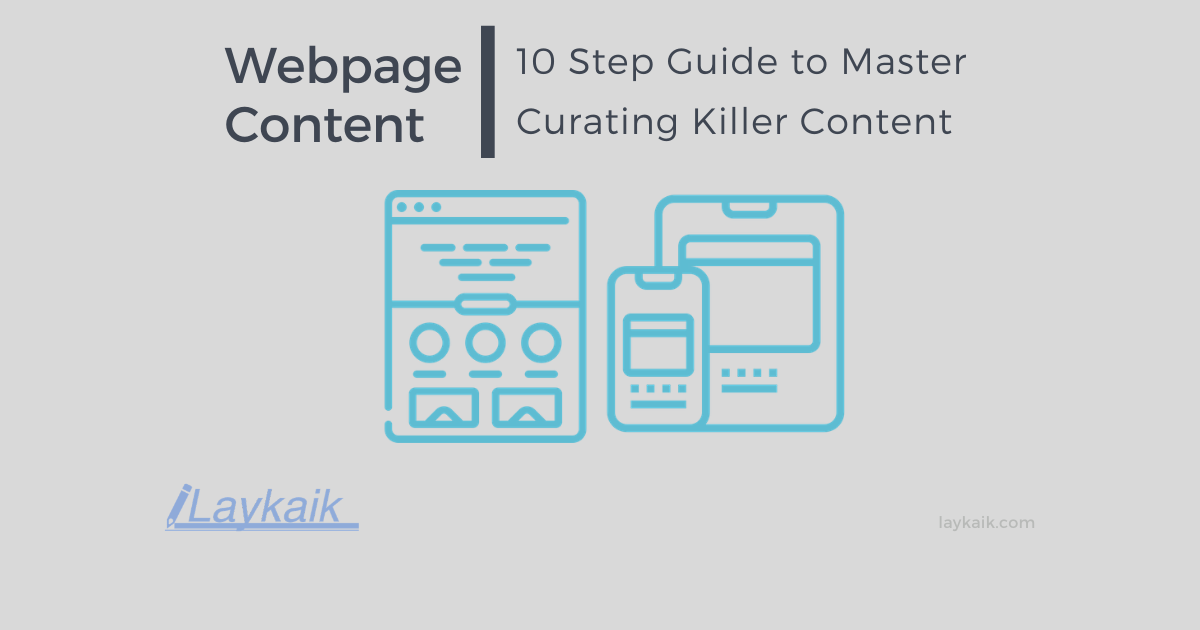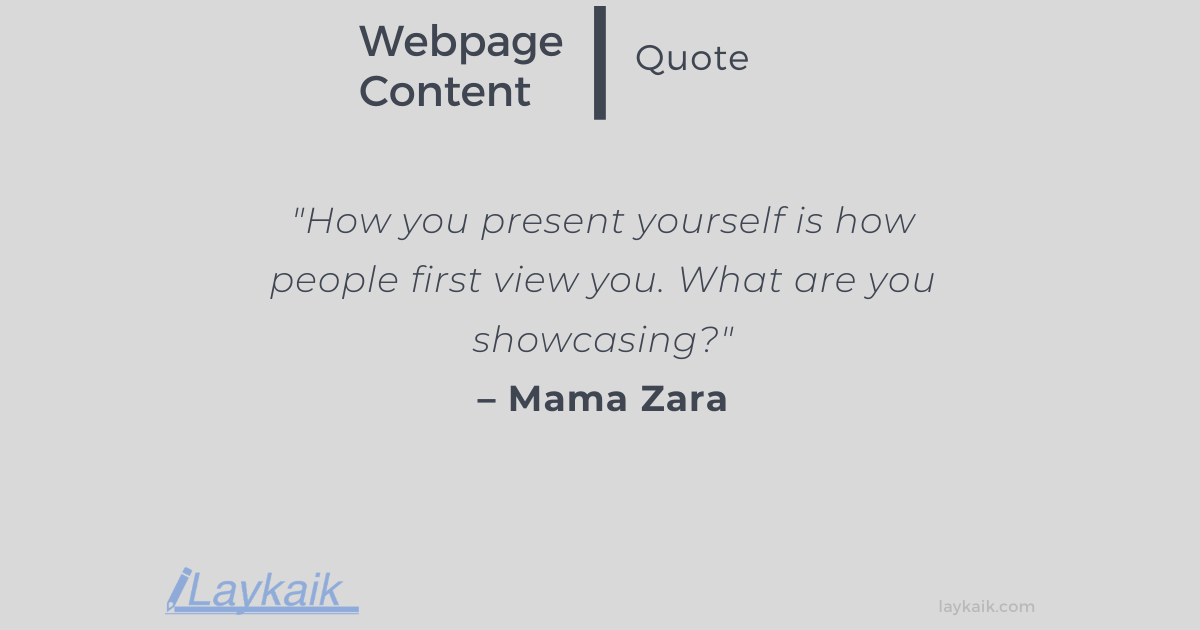
Webpage Content: 10 Step Guide to Master Curating Killer Content
What makes impressive webpage content? To answer that let’s consider why would you visit a website or webpage.
There could be several reasons for that. You might be looking for information on some topic, purchasing a product, or just socializing with friends. Accordingly, you expect the page to appear. Any discrepancy in the content of your webpage from what your potential customers are looking for? You need to re-think your content strategy.
You just need to address the customer query with solutions or products that you have. Simple, isn’t it?
No. There are several other things that you need to keep in tandem. Your webpage content should be in lines with the search engine algorithms, social media snippets, user experience guidelines, and so on the list keeps going.

The famous quote by Mama Zara is applicable to the digital marketing world as well. A website is not just a collection of images, words, and designs. Its content must be interesting as well informative, i.e. it must catch the attention easily while offering the solution they are looking for quickly. There are right practices that must be followed for preparing proper webpage or website.
A website must stand out from others. There are basics for it. Your logo has to be at the top of the webpage to gain identity for your business or site. Some of the important pages should remain easily accessible on the website are Home, Contact, and Search links. However, getting the best out of your webpage requires you to take it as a dedicated strategy among various types of content marketing. Finetuning your content marketing for a webpage will need you to follow a series of steps:
1. Understand Who is Reading Your Webpage Content
It is critical to understand that you understand the preferences and behavior of your audience before you build any sort of content for them. Their preference in language, device, and quality of internet connection are some of the basic factors that can change your content strategy. For example, if you are selling luxury jewelry in London, your website content will be in the English language with high-quality photos. If you are offering food delivery service in different regions of South Asia, your website content might go for native languages with easy-to-load photographs.
2. Follow the Inverted Pyramid Model
Usually, visitors tend to skim through the content, instead of reading every detail on the page. As the user scrolls down the page, their attentiveness drops further. The inverted pyramid model refers to a content strategy where you offer the most important detail right at the top of the page while the user’s attention if maximum. Going down the page, the information in the content keeps descending.
3. Write Short and Simple Sentences
Instead of offering your flair of writing, write for the comfort of your readers. Rethink what you would like to read ‘as your potential client’ – a long paragraph or a short compact one? Of course, the answer would be the short and compact one with dense meaning and satisfying visual presentation.
Longer paragraphs turn out to be cumbersome and attract a lesser audience. Readability and understanding of information allow users to consider the business offerings. Along with built-in plugins with your website Content Management System (CMS), there are several other readability metrics that you can follow to ensure your content is user-friendly.
4. Stick to Active Voice
Using active voice creates user-friendly, expressive and clear sentences. A direct message to the readers is more impacting rather than indirect ones. Here is a choice for you:
- Active: I am reading this article.
- Passive: This article is being read by me.
Which one of the abovementioned examples will you choose for simplicity and easier understanding? If you think that passive form isn’t too bad either than consider a more complex sentence that you will be writing for your business.
5. Focus on Visual in Webpage Content
Visuals have a great role to play for your webpage content from setting your brand appeal to keeping your website visitor’s attention on the page. When you are reaching out to the global audience with a different preference of languages, sync of right visuals can convey your message with ease. Hence keep your product descriptions simple yet descriptive to get a visual clarity, just by reading it.
A balanced utilization of visuals, such as images and videos is helpful in Search Engine Optimization (SEO) as well. It can even contribute to several page performance metrics, including time on page, bounce rate, scroll percentage, Click Through Rate (CTR), and more.
6. Avoid Jargon
“Jargon and talking above your customer is bad for business.”
– Cathy Huyghe (Co-founder, Enolytics)
How you understand your industry can differ from your client’s understanding. To convey your message with your webpage content, you need to avoid using jargon that your potential client may not be familiar with. Any complex word or jargon can be a turn off for the user. Even if try to google the meaning of a jargon they read on your webpage, it’s a loss of attention.
7. Strategically Use Your Words
While you try to impress the customer on your webpage, you also need to think of the ways how you will bring the customer to the page. There are various sources that can invite traffic to your webpage, such as search engines, social media, and so on. To attract more traffic from such sources, you should understand the right set of keywords and then place them in your content strategically. Always remember that the end consumer of your content is a human, so don’t lose the sense while trying to impress the algorithms of search engines.
8. Make Text Scannable
Most visitors to your webpage are lazy and in a hurry. Therefore, deliver content that they can scan without deep diving. Here are some tips for writing scannable content:
- Organize the webpage into proper readable information. Headings and their subheadings should maintain the right flow.
- Use images and icons with text for easier understanding.
- Simplify navigation through the website such as advanced search tools, translation, maps to increase the interactivity and more visitors to the site.
- Avoid early distractions, such as popup to ask for their email. Such elements should feature once the user has spent some time on the page or is about to leave the page (exit intent).
- Include white space to make content pleasant.
9. Place Your Call to Action (CTA) Appropriately
Every webpage should ask the visitor to take action. The homepage may invite visitors to check your product or service pages. Your service/product pages can ask the visitor to fill a form or start a chat. You may even ask for the email using a popup if you have the right email marketing strategy in place. To help such actions from the visitor, it is important for you to place the Call to Action (CTA) button appropriately.
10. Add Social Media Icons
Adding social media icons at the bottom of the site (footer) that goes directly to Facebook, Twitter, Instagram, LinkedIn, Pinterest and other platforms is an absolute way to engage customers in the best possible course of action. Social media platforms will speak volumes about your business by enabling to reach more new connections. Nearly more than 50 % of websites use social media to reach their destinations and the most commonly used is Facebook.
Wrap Up
The content strategy of your webpage should never be limited to just text. Writing is just a part of webpage content. That means there are many other facets on a webpage that adds value which in turn attracts visitors to the site. Website characteristics include practicing the right practices to make webpages look not only good overall but also user-friendly and informational. The main focus of the webpage, presentation style both visual and textual, the inclusion of animated images, videos, audios, pop-up images, maps, keyword presence, ads are significant characteristics of the website.
Do you agree with the right practices and can you be able to apply them while preparing a webpage or website? Write in the comments below.

Nishant Kadian is a content marketer with more than 6 years in the digital marketing industry. He is currently working with Ameyo. He has been associated with cloud tech leaders, like Affle, ACE Cloud Hosting, Servetel, and TheRealPBX in the past.
Like!! I blog frequently and I really thank you for your content. The article has truly peaked my interest.